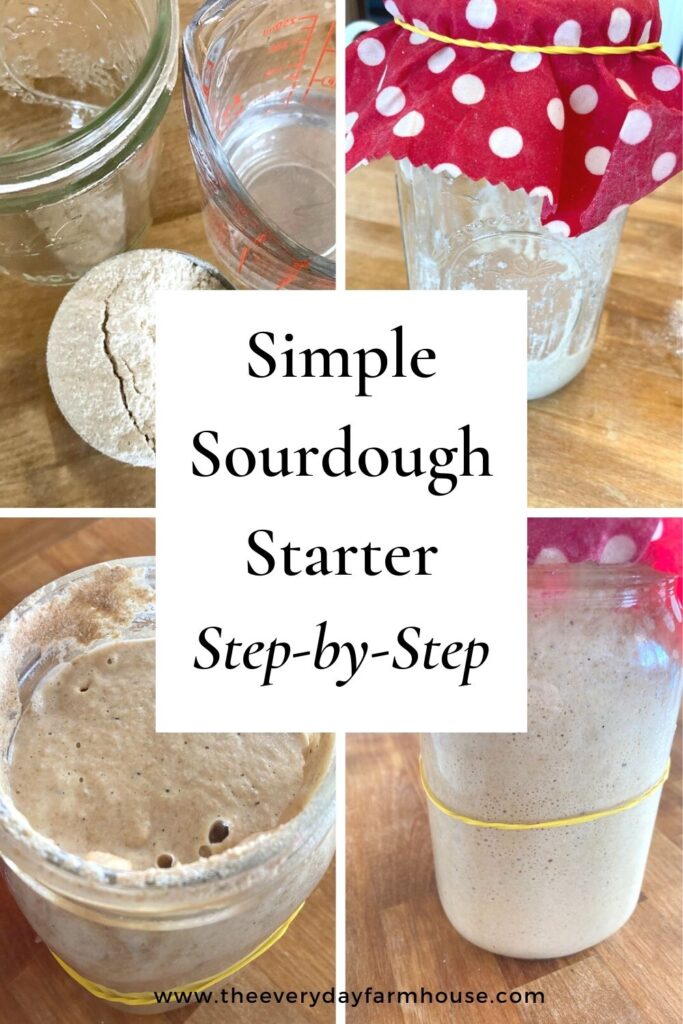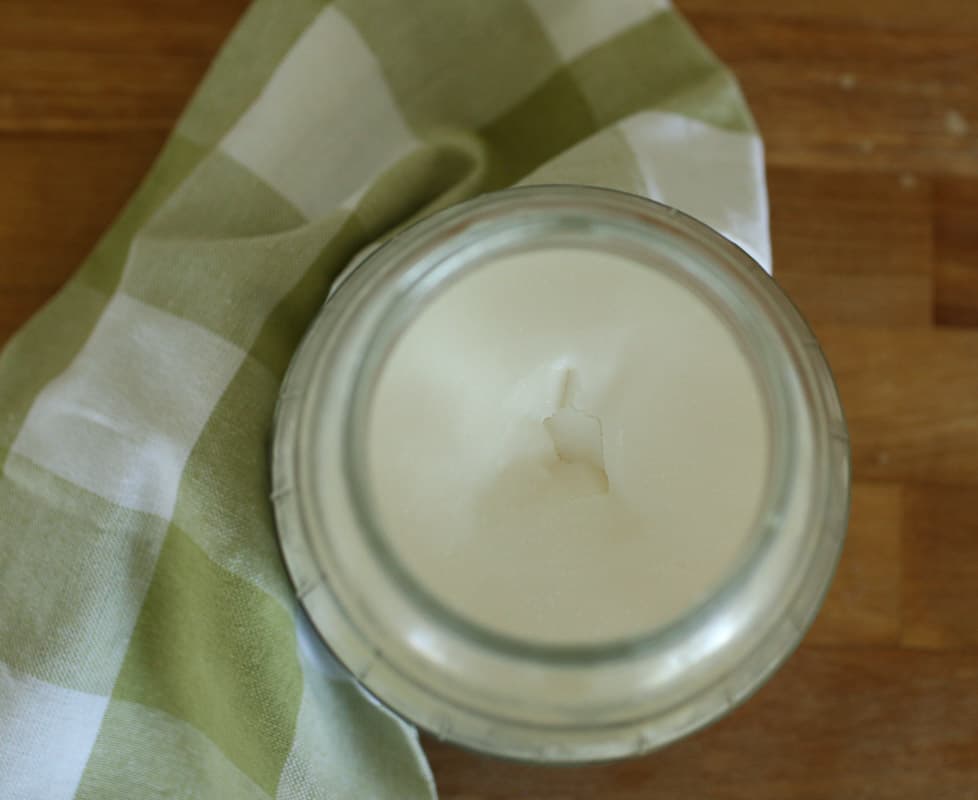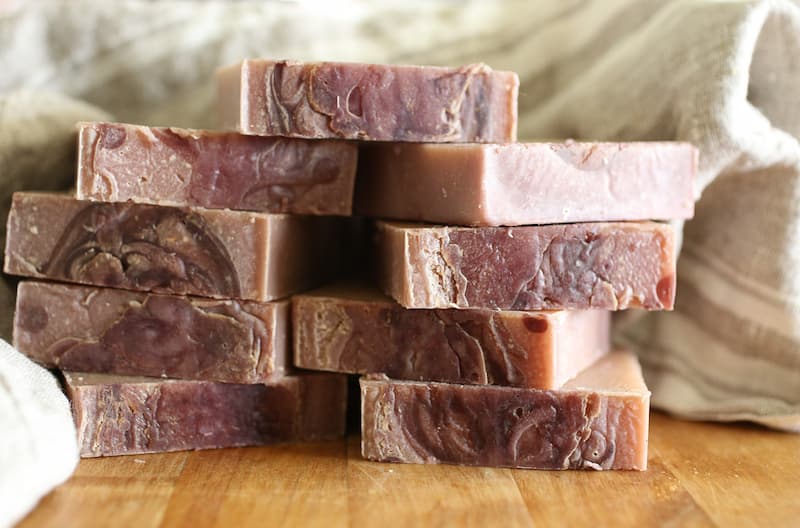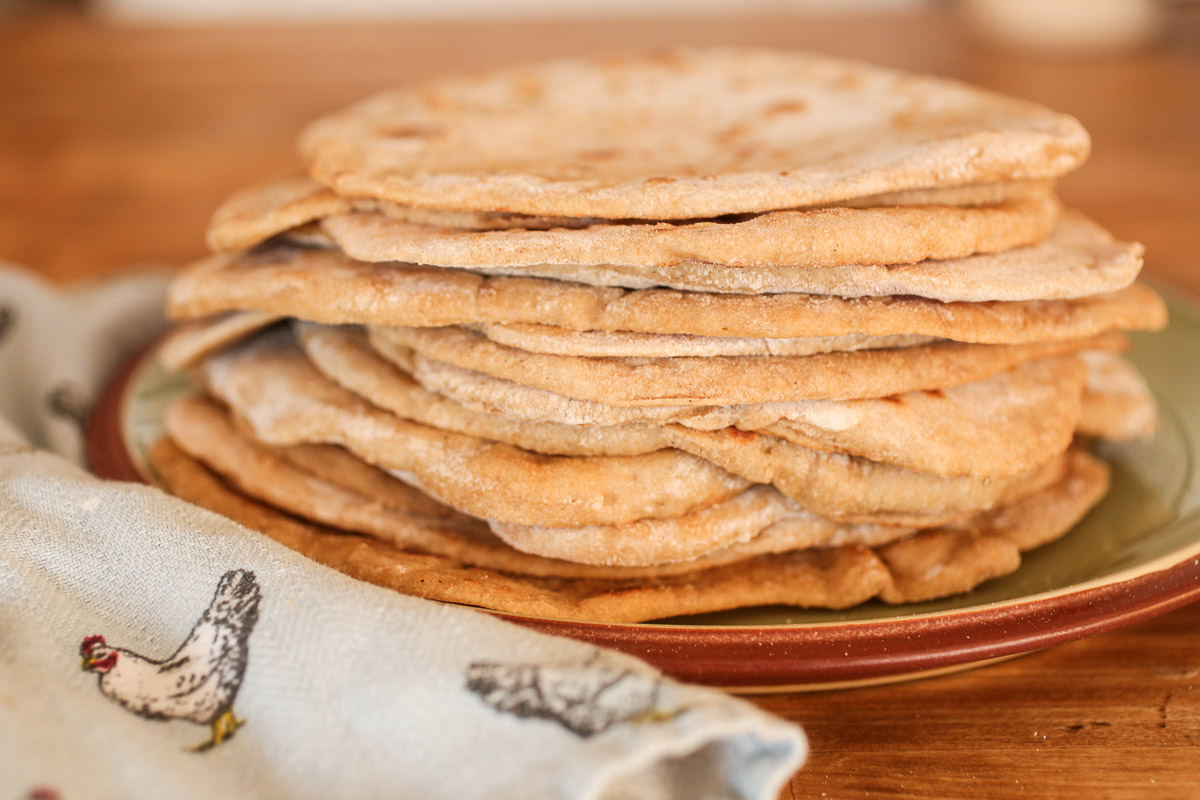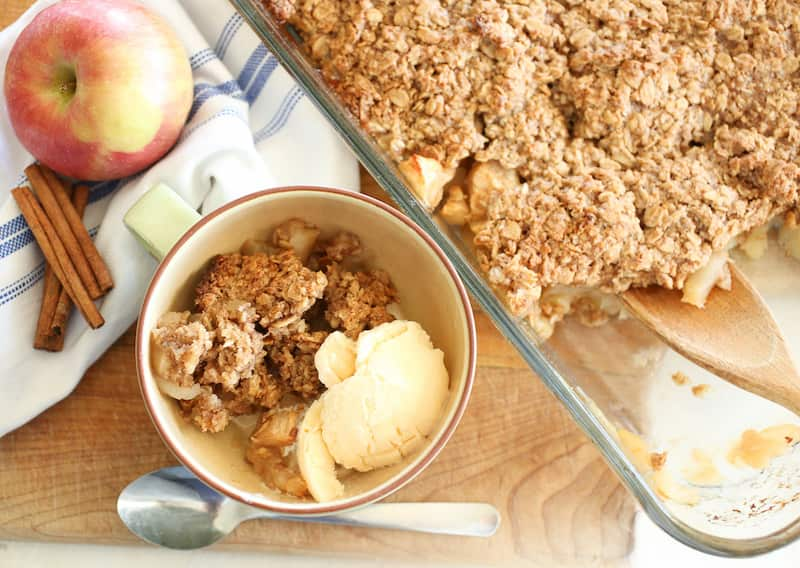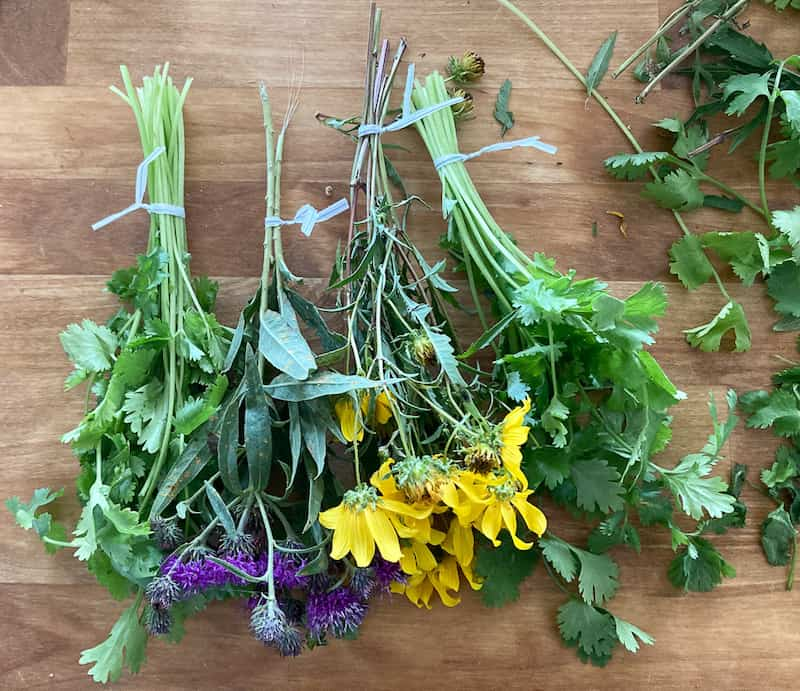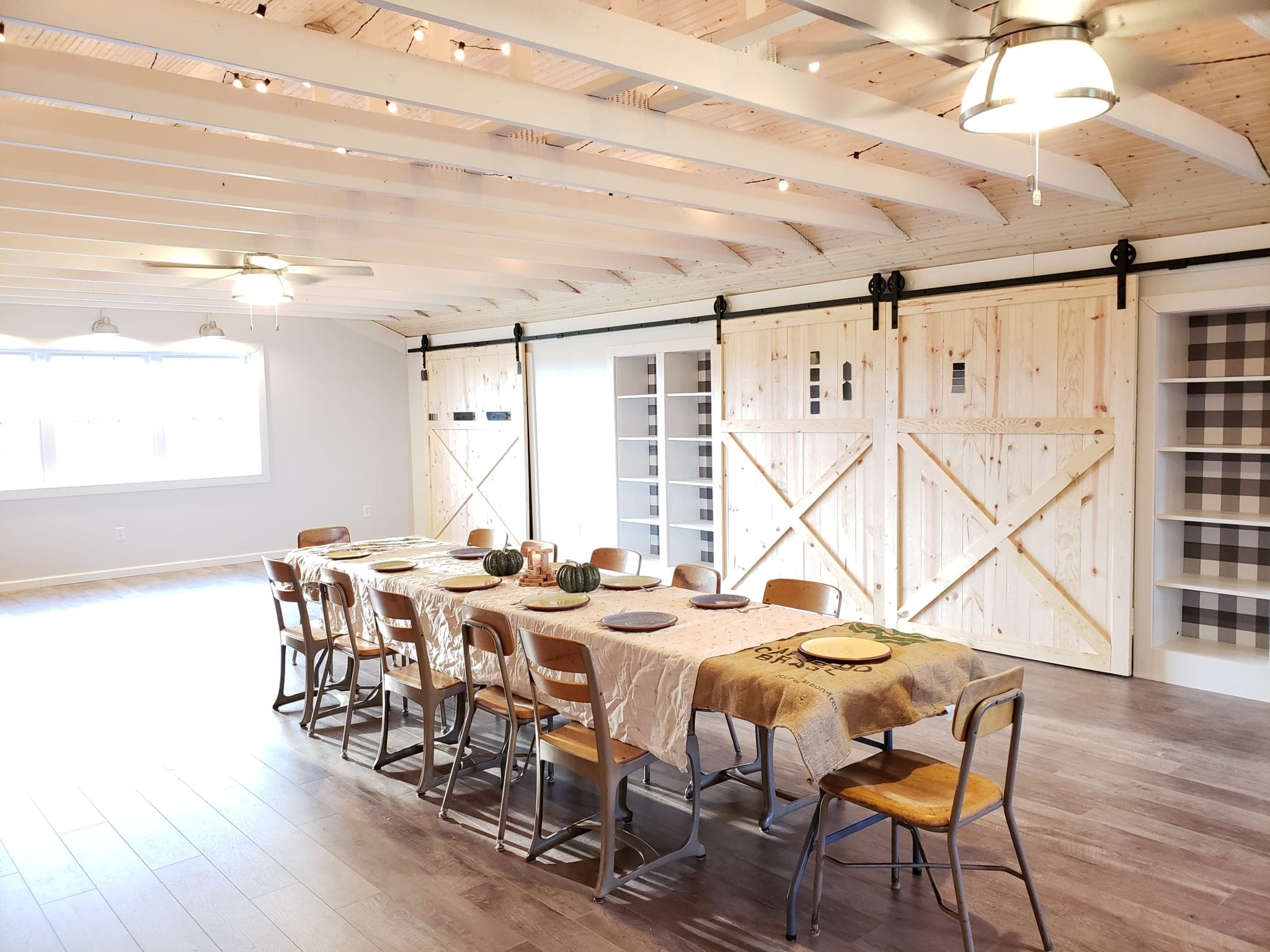Sourdough Starter Recipe | Simple Easy Sourdough Starter Step by Step
This Sourdough Starter Recipe is just about as simple as it gets. Just water, flour, and a bit of time are all you need to get your sourdough starter going. In about a week you will have a starter of your own!
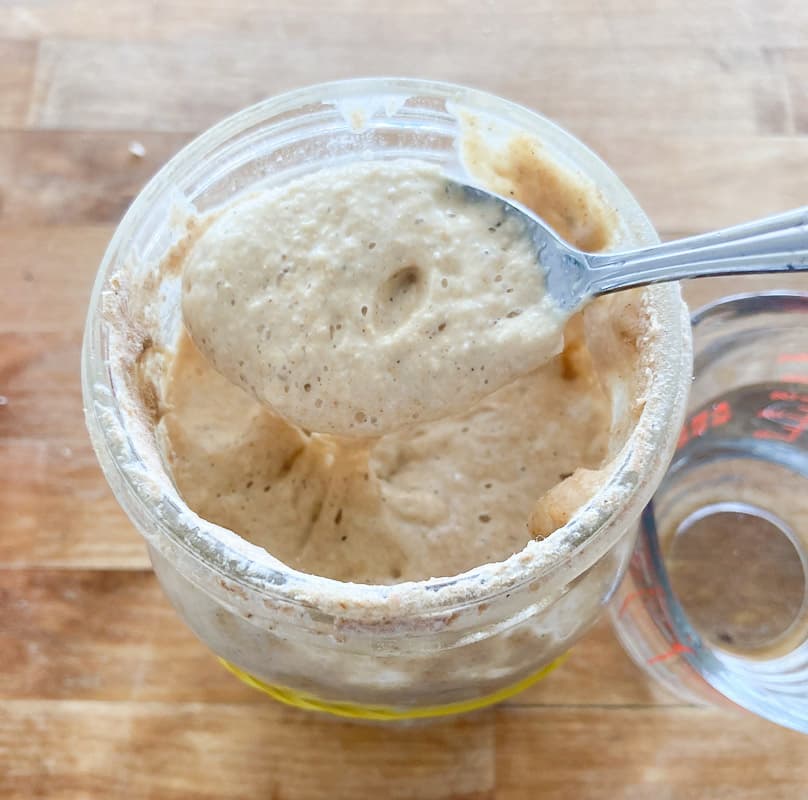
For our #handmadehomechallenge we have been talking all things sourdough for the month of January. I did a post and video on how to reactivate a dried sourdough starter. I also shared several recipes to get you started. However, there were a few people who didn’t want to buy a dehydrated starter, they wanted to get their own starter going from scratch! Well, I’m here for that too! Let’s see how to get a sourdough starter going from scratch!
What Do You Need to Make a Sourdough Starter?
- A pint-size and quart-size glass jar
- A cloth, coffee filter, or beeswax wrap for the top
- Flour ( I use whole wheat, but you can use white or rye as well) we will get into the types of flour later
- Water- filtered water is best, however, you can use tap water. If your water has chlorine. you may want to use bottled or filtered water. I use the Berkey Water Filter and love it!
- Something to stir with
Sourdough Starter Feeding Schedule
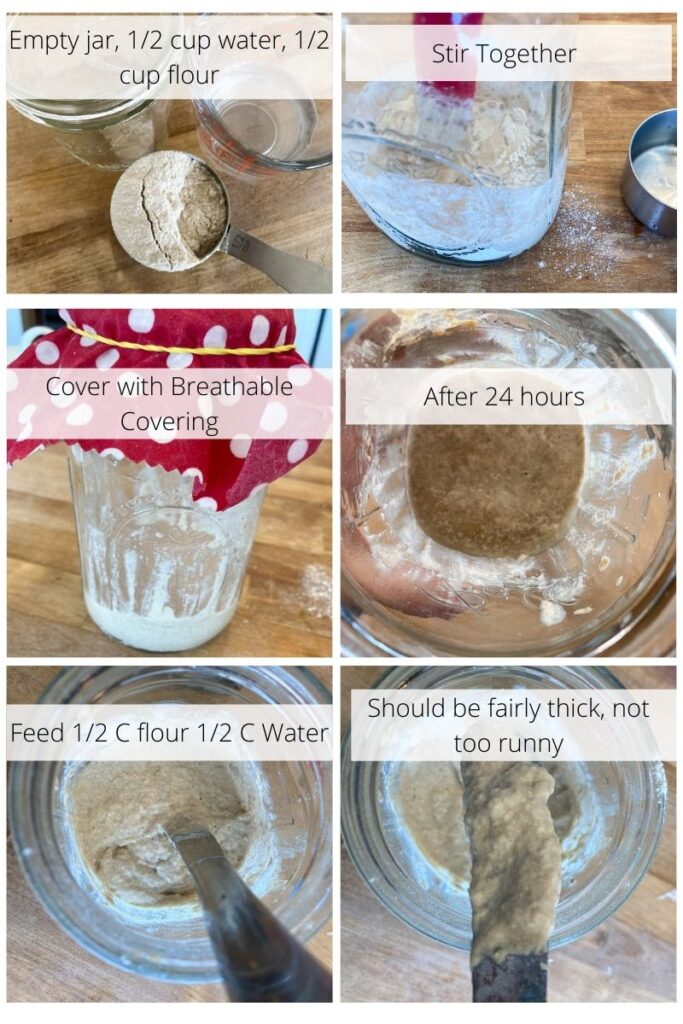
Sourdough Starter- Day 1
In your pint-sized jar mix 1/2 cup flour and 1/2 cup water. Cover with a breathable cloth or coffee filter and secure it with a rubber band
Sourdough Starter- Day 2
Stir in another 1/2 cup flour and another 1/2 cup water. Cover again and leave until the next day.
Sourdough Starter- Day 3
Today your starter may start to have some bubbles, very exciting! There may also be a layer of liquid on the top. That is normal, just give it a stir and remove about 1/2- 3/4 cup of the starter and place it in a quart-sized jar. Now feed that with another 1/2 cup water and 1/2 cup flour.
What remains in the original jar is called discard. You can toss it, compost it, feed it to your chickens or you can save it in your fridge for the rest of the week. Throughout the rest of the week, you will need to discard every day. You can save some of the discard in a jar and then try out some discard recipes, like this sourdough apple crisp.
Sourdough Starter- Day 4
Feed your starter 1/2 cup flour and 1/2 cup water. Check on it again in the evening, if it has that layer of liquid on the top, you can feed it again with the same amount.
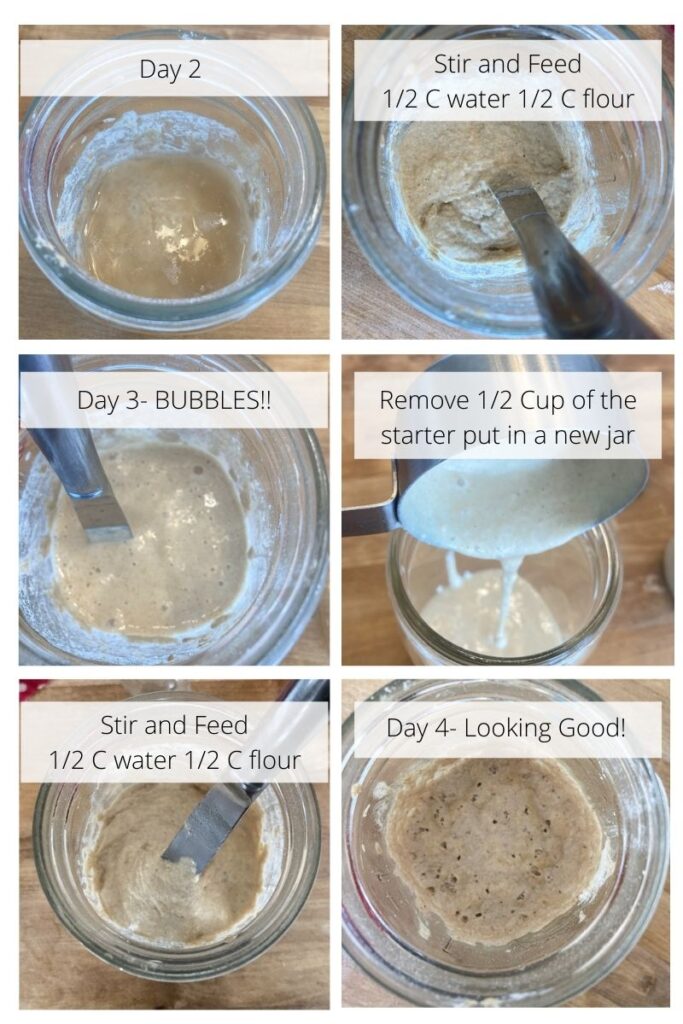
Sourdough Starter- Days 5-7
You will continue to feed your starter 1/2 cup flour and 1/2 cup water morning and night. This means that in order for your starter to remain a reasonable size you will need to remove approximately 1/2 cup of starter each time you feed it. Again, you can discard that or you can save it for baking discard recipes.
Honestly, you may be able to get by with just feeding it once a day. I did on days 5 and 6, I just fed it a bit more. Remembering to tend to it twice a day is a bit much for some people. If you miss a feeding, just give it extra and you should be fine!
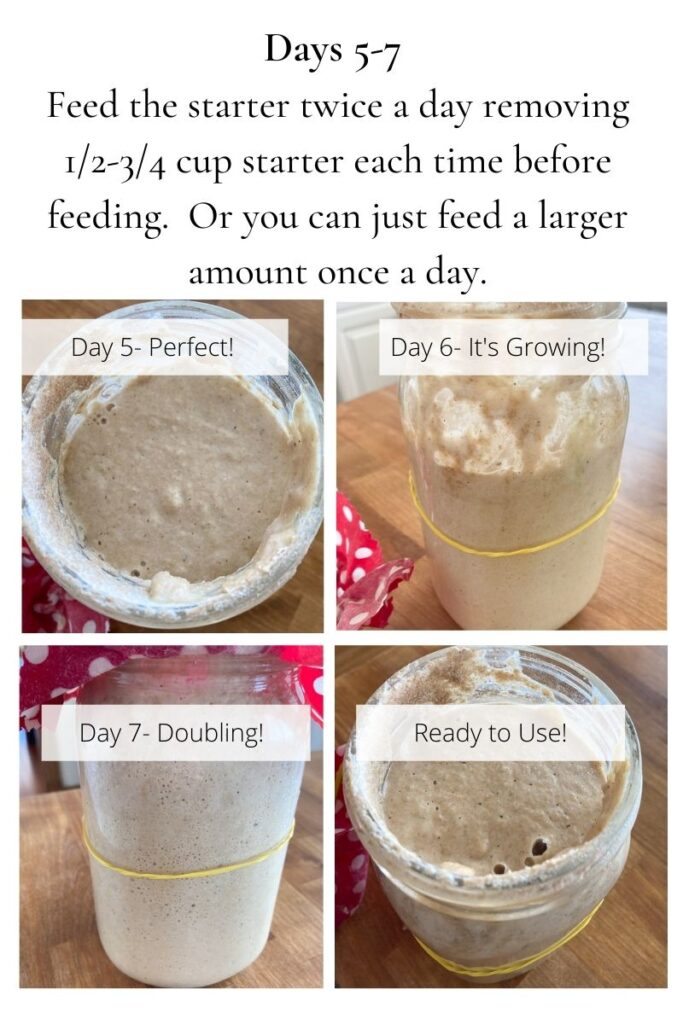
Day 7 Readiness Test
On day 7 really watch your starter to see if it is ready for baking. There is a float test, but honestly, I have never liked that test. It is said that you can drop a bit of starter in a cup of water and if it floats it is ready. I have had a portion of it float and a portion of it sink….not so sure what that meant.
I think the best way to test the readiness of the starter is to watch it and observe it. After you feed it on day seven, place a rubber band around the jar at the level of the starter. If after 4-8 hours the starter doubles in size or rises far above the rubber band, then it is active and ready to use.
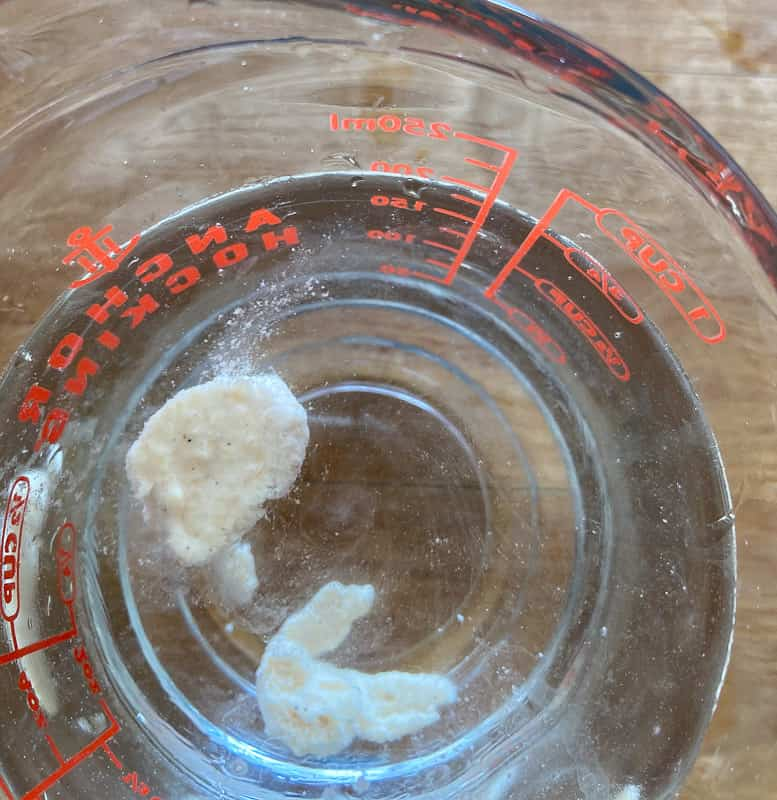
Sourdough Starter FAQ’s
What Flour is Best for Sourdough?
When I was just getting into sourdough, I did a lot of research on this. I really wanted to use whole wheat flour, and I wasn’t sure if I could. I read this article and I thought it was very helpful! Turns out you can use whatever flour you want really! I use Prairie Gold Wheat Flour.
Please note that you can also change the type of flour that you are using. You can gradually add in a different type of flour as you transition to a different type of flour. Don’t switch all at once, use half of the old type of flour and half new as you switch over.
Do I Really Only Need Flour and Water?
Many recipes call for all sorts of different ingredients for sourdough starter, some call for yeast, some call for juice. I am here to tell you that it doesn’t really get more simple than flour and water and it really works!
What Container is Best for Sourdough Starter?
I think it’s easiest to start with a pint-sized jar, it is just easier to stir. However, you can start with a quart jar. Glass is really best as it doesn’t harbor bacteria like plastic can and it can be disinfected at high temperatures. Once your starter is established you will want a lid, it doesn’t need to be super tight-fitting, as in air-tight, just something to keep flies and such out.
The size of your jar will also depend on how much starter you need to keep on hand. If you have a large family like me, you will want to keep at least a quart-size jar of starter, I actually keep a two-quart size. If you only have a couple of people in your family, you won’t need a huge starter.
What is the Best Temperature for Sourdough Starter
Between 70-75 degrees is ideal for a sourdough starter. Anything cooler and you may have trouble getting the starter to ferment. Anything warmer and you will find it becoming very active and needing to be fed more often.
Why Do I Need to Discard or Throw Out Starter?
I know this is what seems annoying about sourdough. However, you won’t have to discard forever, only this first week when you are getting your starter established. If you don’t throw some out your starter will grow too big for your container. Also, the bigger the starter the more it needs to eat. If you have 2 cups of starter, to keep it healthy you will need to feed it 1 cup of water and flour. You can see that it would quickly outgrow your container.
Once it is established, you can store it in the fridge, feed it when you take it out, and only use what you need. Then you can put it back in the fridge until the next time you need it. More on this later.
What is the Black or Clear Liquid on Top?
This is an alcohol by-product called hooch. It is harmless, you can simply pour it off or stir it in. It just means that your starter is hungry…so feed it!
What if there is Mold on My Sourdough Starter?
No good. Time to toss it and start over. Don’t try to salvage moldy starter…not that you would!
What if My Starter Looks Crusty on Top?
That’s ok and normal. Just scrape it off and feed it.
How to Maintain and Keep a Sourdough Starter
This is one of the areas where people feel overwhelmed with their starter. You begin to feel like it’s a child that needs tending to each day. It really doesn’t have to be that way. Here are a couple of different ways to keep your starter alive without feeling burdened by it.
Keep it on the Counter and Feed Daily
If you keep your starter on the counter, then you need to feed it regularly to keep it alive and healthy. Feeding it once a day should work fine, however, if the starter is large, like more than a couple of cups worth, you may need to feed it twice a day. The rule of thumb is you need to feed it the same amount as is in the jar. So if you have 1 cup of starter in your jar then you need to feed it at least a cup that day. If you don’t use it, then the next day you will need to feed it more, and it will just continue to grow if you are not using it.
This is the most common way to keep a starter here in America. However, this is also what makes people want to quit. Seeing that starter sitting there and knowing you need to feed it and then bake something so that it doesn’t get large and out of hand is kind of annoying. Or knowing that you need to either make a discard recipe or throw out some of the starter feels wasteful. It’s like putting pressure on yourself for no good reason. The starter should be a blessing to you, not a burden.
If you do bake a lot of bread or if you are regularly making items with sourdough, then this method will work just fine for you.
Keeping Your Starter in the Refrigerator
This is a great method for the weekly or bi-weekly baker. You simply feed the starter after you bake and then store it in your refrigerator for a week or more. Some people say you should still tend to it every week and feed it, however, you really don’t have to. I have left mine in there for up to six weeks.
Keeping Your Starter in the Refrigerator Method 2
I just recently learned about this method from my friend Anja at Our Gabled Home. She is from Germany, and this is the way they keep their starter. She simply bakes with her starter and then she adds some flour to whatever is left, she doesn’t add any water. Then she puts a lid on it and puts it in the fridge. When she knows she is going to bake, she takes the starter out, feeds it some water stirs it up, and lets it get active. Then she uses the starter.
Printable Instructions
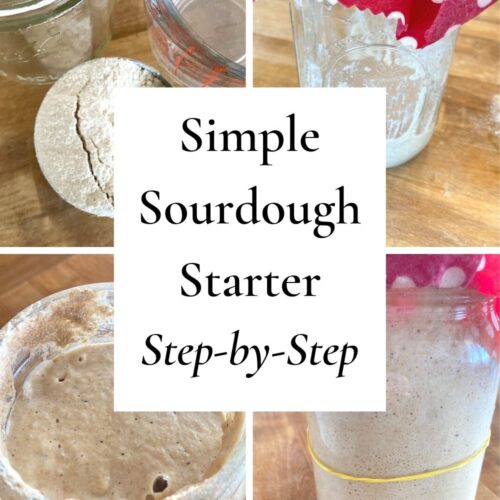
Sourdough Starter From Scratch
Equipment
- Quart Glass Jar
Ingredients
- 4-5 Cups Flour Divided over 7 days
- 4-5 Cups Water Filtered is best, divided over 7 days
Instructions
- DAY 1
- Stir Together 1/2 Cup Flour and 1/2 Cup Water. Cover with a breathable covering, something like a coffee filter, tea towel, or beeswax wrap
DAY 2
- Feed your starter another 1/2 Cup Flour and 1/2 Cup Water, Stir. Cover again, set aside until tomorrow.
Day 3
- Today you may see bubbles! Very exciting! There may be a layer of liquid on the top as well, this is normal, it means the starter is hungry. Stir it all together. Remove 1/2-3/4 cup of the starter and place it in a new quart jar. Now, feed that with another 1/2 cup flour and 1/2 cup water. You can save the remaining starter or toss it. You can add that starter to "discard" recipes.
Day 4
- Feed your starter 1/2 Cup flour and 1/2 cup water, stir, cover, and set aside.
Days-5-7
- Feed the starter 1-2 times a day removing 1/2 cup to 3/4 cup of the starter before feeding each time. If you only feed once a day, you may need to feed closer to a cup of flour and a cup of water. Keep the size of your starter manageable by removing some of it before each feeding.By day 7 the starter should be doubling in size 4-8 hours after it is fed. If it does, that means it is ready to bake with!
That’s It!
It may seem like a lot of steps, but really there isn’t much hands-on time. If you can be patient, you can have a healthy active sourdough starter in about a week!
Pin to Your Sourdough Board!
